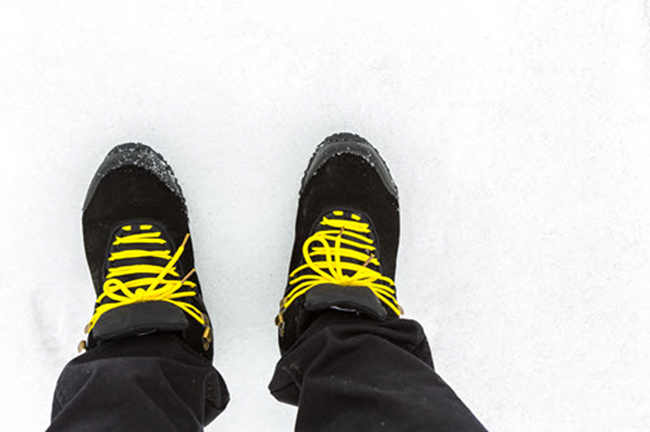Get a Grip: Avoiding Slip and Fall Accidents
In Canada, winter is long, cold, snowy, and icy!
However, we Canucks tend to pride ourselves on our ability to withstand the winter weather. We wear fleecy long johns, woolen socks and big puffy parkas. And of course, we wear warm boots with good grip. Or do we? Recently, CBC interviewed a team of researchers at the WinterLab of the Toronto Rehabilitation Institute. Toronto Rehab is part of the University Health Network, a healthcare and research organization in downtown Toronto. Their iDAPT program is mandated to find ways to reduce accidents, especially winter-related incidents, which is how the experiment began. Researchers tested the grips on the soles of ninety-eight different pairs of boots. Their findings? Only nine pairs were deemed to have sufficient grip to pass a slip test. That is a grim percentage, given the fact that approximately 21,000 Ontarians slipped on the ice last year and injured themselves badly enough to seek hospital treatment. The staff at Toronto Rehab knows only too well that the injuries suffered during a slip and fall accident can impact a patient for years afterward.
Rating the Boots
The WinterLab researchers invented an ingenious test: first they asked people to walk on a level surface covered with ice. Next subjects walked on an incline that began at two to three degrees, and then increased up to seven to 10 degrees. Then they tested the same boots on wet ice. All of the “boot testers” wore a harness as they walked, so if they slipped they didn't hit the ground. Boots were rated on a scale from zero to three “snowflakes.”
Plans are underway for the WinterLab to test the boots in snow, and in the even more difficult conditions of snow covering ice. This will be a challenge because of limitations in creating a winter climate indoors. For a pair of boots to get one snowflake, they had to be effective in navigating a seven-degree slope – the equivalent of the clear cut at the end of a sidewalk leading to a road surface, something people might have to navigate daily. For the top rating of three snowflakes, the boots had to grip satisfactorily on a fifteen-degree incline. Sadly, no boots rated higher than a single snowflake!
Dr. Geoff Fernie, the director of research at Toronto Rehabilitation Institute, says he is not surprised by the results of the experiment. "You'd think winter boots would be adapted for winter, but they're not. Some of the boots are so bad that they couldn't stand up on level ice," says Dr. Fernie. Researchers feel that most manufacturers are more concerned with the appearance of their products than they are with their ability to keep wearers safe.
Researchers found that the shape of the tread itself was not the major determinant as to whether or not people slipped on ice. In fact, the soles that gripped the best on ice were manufactured using special materials that had either a gritty surface, or contained tiny crampons. These two materials were:
- Green Diamond, a rubber with grit embedded in the material.
- Arctic Grip, a material that looked smooth, but which had miniature crampons embedded into the surface.
The nine pairs of boots that rated one snowflake are:

The researchers published their results on the website: ratemytreads.com. The purpose of publicly rating the boots was twofold: to let consumers know which boots had the best ability to cope with icy conditions, and to urge the industry to improve the quality of the grip of their boot soles. These first tests were designed for boots widely available in Canada, but researchers are expanding the study, and are now inviting manufacturers to send in boots from around the world. The aim is to work with manufacturers to improve the performance of boots. While they are encouraged by the performance of Green Diamond and Arctic Grip, these two companies are also still at work on developing a better material.
Slip and Fall Accidents
Unfortunately, until the folks at WinterLab perfect their soles, Canadians will continue to suffer slip and fall accidents. If this happens to you, be sure to seek medical treatment immediately. If you hit your head, it’s particularly important to get checked out; sometimes the effects of a brain bleed are not evident immediately.
If you have been injured in a public area such as a grocery store or restaurant, you should also contact a personal injury lawyer, who will assess your case and advise you as to your options. You may be entitled to an insurance settlement to compensate you for pain and suffering, medical expenses, and/or loss of income.
Sokoloff Lawyers serves Toronto and the GTA, and have had several personal injury cases such as these in the past, we will be happy to provide you with a free consultation.